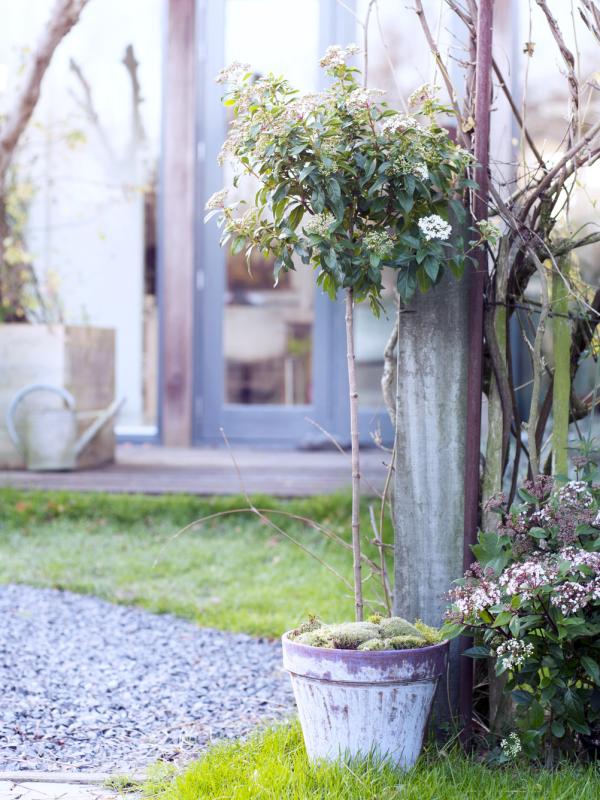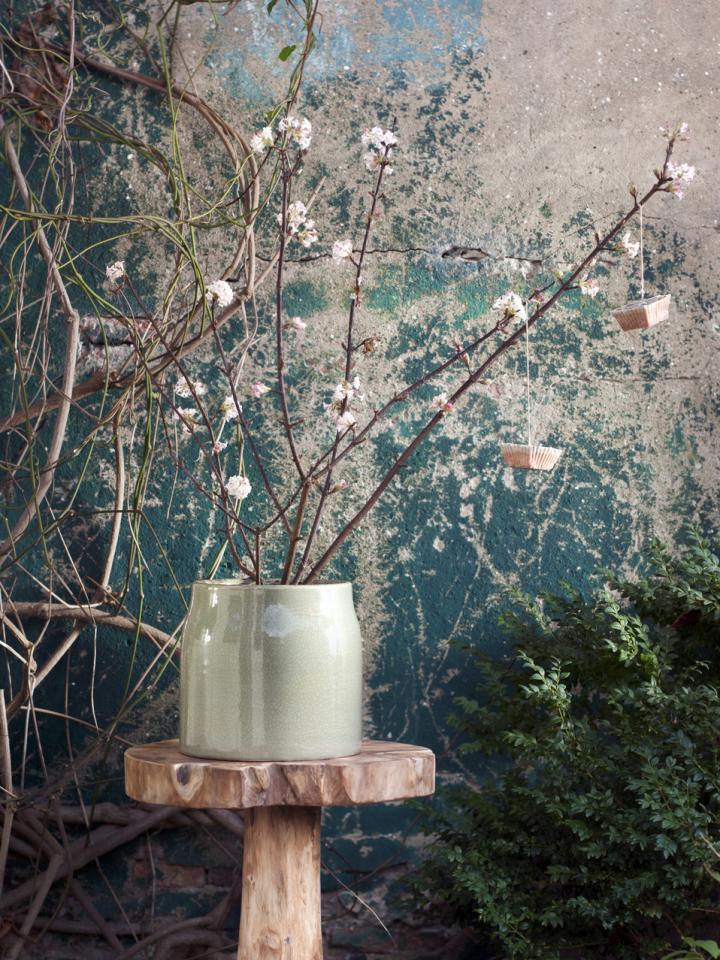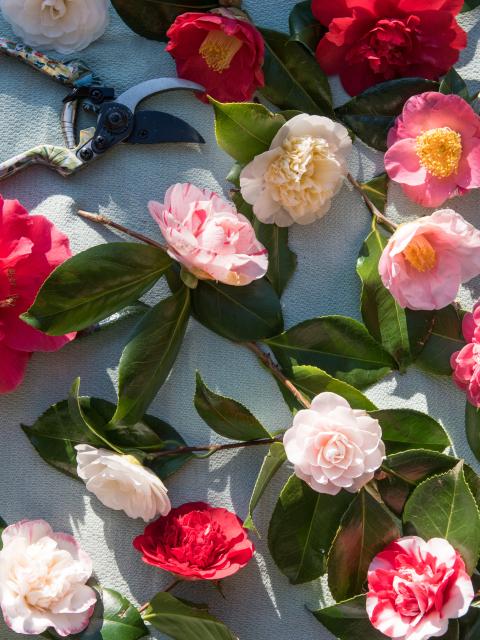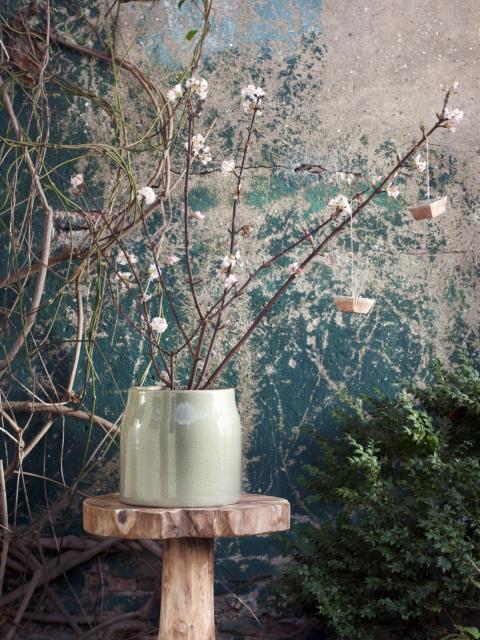Viburnum, also known as Snowball, is a diverse family of shrubs. There are varieties that remain green in winter, semi-evergreens and varieties that lose all their leaves. To compensate for that leaf loss, the bare branches bear sprays of pale pink flowers from November to March. Those flowers are beautifully scented and cope well with frost: a spectacular combination. Generally speaking, the later the flowering the larger the flowers will be. Viburnum either has a second flowering in the autumn or it will produce beautiful red, blue or black berries at that time of year. On average, the plant reaches a height of around three metres. However, there is also a dwarf variety which reaches a height of about one metre and a giant that can easily top six metres! With leaves that also change colour beautifully in the autumn, this garden bloomer has something special to offer in every season, both in a bed and in containers, tubs and pots. It’s the ideal pick-me-up for the first - and often rather dull - garden months of the year.

Greetings from Gelderland!
Viburnum is a member of the moshcatel family and occurs in the temperate and subtropical regions of the northern hemisphere. The Latin name Viburnum is derived from the word ‘vincia’ - ‘to bind’ - because of its tough, flexible stems which were used in the past to tie things together and for wickerwork. The shrub spread across Europe from the Mediterranean region. Virburnum is associated with the Netherlands and has been known for centuries as ‘Guelder rose’, after the Dutch province of Gelderland, where the snowball is said to have first flowered.
Viburnum trivia
- The plant symbolises pride, because it performs through all four seasons.
- The berries help birds get through the winter, but are not edible for humans.
- In China, viburnum is often planted around temples: the fragrance is an extra tribute to the Buddha.
- In prehistoric times viburnum’s long straight branches were used as arrow shafts. This was revealed by the discovery of Ötzi the Iceman, whose mummified 4000+ year old body was found in the Alps. His quiver was full of straight, light branches from this shrub.
- American garden guru Michael Dirr says: “A garden without viburnum is like a life without music or art.”







